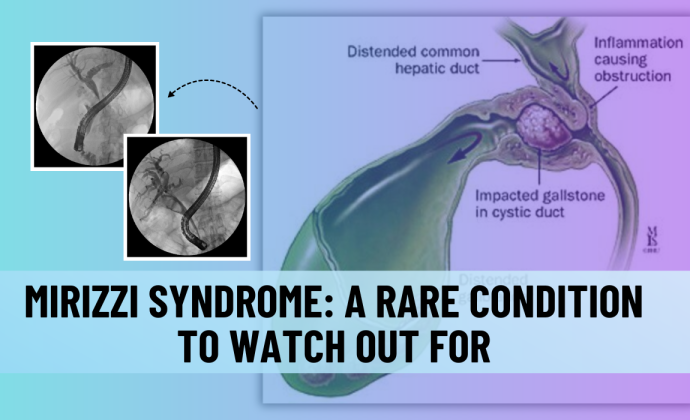
Mirizzi Syndrome: A Rare Condition to Watch Out For
Mirizzi Syndrome is a rare but serious medical condition that occurs when a gallstone becomes lodged in the neck of the gallbladder or cystic duct, compressing the main bile duct (common bile duct). This can obstruct the flow of bile from the liver to the intestines, potentially leading to severe complications if not properly treated. This article aims to provide an understanding of Mirizzi Syndrome, its symptoms, and treatment, to help readers be more aware of this condition.
What is Mirizzi Syndrome?
Mirizzi Syndrome occurs when a gallstone lodged in the neck of the gallbladder or cystic duct exerts pressure on the common bile duct, causing an obstruction of bile flow from the liver to the intestines. Symptoms can vary, and this syndrome can lead to serious complications such as cholangitis or the formation of fistulas.
Causes and Symptoms
The primary cause of Mirizzi Syndrome is the presence of gallstones in a critical area, namely the neck of the gallbladder or the cystic duct, which results in blockage or compression of the main bile duct. Common symptoms include:
– Upper abdominal pain, particularly on the right side
– Jaundice, characterized by yellowing of the skin and eyes
– Fever and chills, especially if an infection occurs
– Nausea and vomiting
Because these symptoms are similar to other conditions, Mirizzi Syndrome is often difficult to diagnose without additional testing.
How is Mirizzi Syndrome Diagnosed?
Diagnosing Mirizzi Syndrome requires careful examination. Physicians typically start with an ultrasound (USG) to detect gallstones and any obstruction in the bile duct. Additional imaging tests such as Magnetic Resonance Cholangiopancreatography (MRCP) or Endoscopic Retrograde Cholangiopancreatography (ERCP) may be used to provide a clearer picture of the bile ducts and determine the severity of the obstruction.
Treatment for Mirizzi Syndrome
Treatment for Mirizzi Syndrome depends on the severity of the condition. In mild cases, endoscopic procedures may be sufficient to remove the obstructing gallstone. However, in more complex cases or if complications such as fistulas are present, surgery may be required. Cholecystectomy, the removal of the gallbladder, is a common surgical procedure used to treat this condition.
Prevention and Awareness
While Mirizzi Syndrome cannot always be prevented, maintaining a healthy gallbladder through a balanced diet and avoiding obesity can reduce the risk of gallstone formation. Recognizing early symptoms and undergoing regular medical checkups are crucial in preventing the development of more serious complications.
Mirizzi Syndrome can lead to severe complications if not properly treated. If you or someone you know experiences suspicious symptoms, it is important to consult a doctor for evaluation and appropriate care.
Author: M. Begawan Bestari, MD, PhD, FACG, FASGE
Sources:
Jones MW, Ferguson T. Mirizzi Syndrome. [Updated 2023 Apr 24]. In: StatPearls [Internet]. Treasure Island (FL): StatPearls Publishing; 2024 Jan-. Available from: https://www.ncbi.nlm.nih.gov/books/NBK482491/
Klekowski J, Piekarska A, Góral M, Kozula M, Chabowski M. The Current Approach to the Diagnosis and Classification of Mirizzi Syndrome. Diagnostics (Basel). 2021 Sep 10;11(9):1660. doi: 10.3390/diagnostics11091660. PMID: 34574001; PMCID: PMC8465817.
Clemente G, Tringali A, De Rose AM, Panettieri E, Murazio M, Nuzzo G, Giuliante F. Mirizzi Syndrome: Diagnosis and Management of a Challenging Biliary Disease. Can J Gastroenterol Hepatol. 2018 Aug 12;2018:6962090. doi: 10.1155/2018/6962090. PMID: 30159303; PMCID: PMC6109484.
Putra, Ario Perbowo; Christine, Griskalia; Amin, Zulkifli; and Fauzi, Achmad (2015) “Pendekatan Diagnosis dan Tatalaksana Sindrom Mirizzi,” Jurnal Penyakit Dalam Indonesia: Vol. 2: Iss. 3, Article 8.
DOI: 10.7454/jpdi.v2i3.83. Available at: https://scholarhub.ui.ac.id/jpdi/vol2/iss3/8
Cover ilustration sources:
ERCP in a case of Mirizzi type II © 2018 Gennaro Clemente et al.
pinterest.dk





 Users Today : 37
Users Today : 37 Total views : 2130039
Total views : 2130039 Who's Online : 4
Who's Online : 4